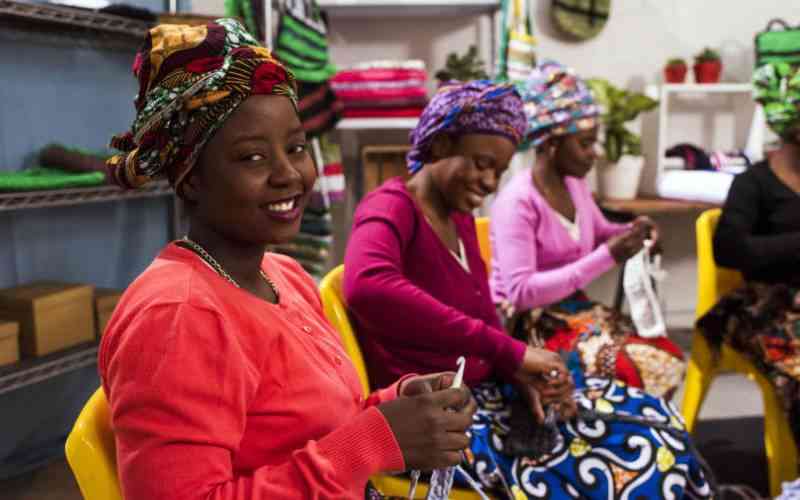
The What Women Want Summit took place last month at the Trade Mark Hotel in Nairobi. One of the breakout sessions addressed the gender pay gap, the premise being that men earn more than women for the same job.
“Earning good money is part of a woman’s emancipation. The truth is that men got a head start at making money. Women are playing catch-up. A woman cannot be fully emancipated if she cannot afford to pay bills.
“For us we no longer want to just earn: we want to be paid our worth. There is no reason why a man should earn more than me when we are practically doing the same job,” says Faith*, one of the session’s attendees.
Indeed, the numbers suggest that the average woman in Kenya earns less than a man. The unadjusted raw gender pay gap in Kenya is 17.7 per cent when considered at the hourly level and 31.3 per cent at the monthly level.
In other words, if you are looking at the average pay of a man and a woman doing the same job, for every Sh100 the man earns, the woman takes home Sh17.7 less per hour, or Sh31.3 less per month.
These numbers are captured in a 2023 survey conducted by UN Women and captured in a report titled ‘Why Women Earn Less: Gender Pay Gap and Labour-Market Inequalities in Kenya.’
The gender pay gap is the difference in average gross earnings between women and men per hour – or per a definite period.
“It is based on salaries paid directly to employees before income tax and social security contributions are deducted,” says Jane Mutisya, a Human Resource (HR) practitioner.
- How to handle parenting in a changing world
- Parenting tips as a single father
- Dangers of having a favourite child
- Don't let confusing parenting advice scare you
Keep Reading
Mutisya, the HR Projects Director at Career Management Centre Ltd, an HR consulting firm that guides organisations in setting up remuneration structures, says that gender is not among the factors proper employers consider in determining the benefits package for a job. There are key factors that we examine, scientifically, to determine what one should earn.
“Some jobs only require basic education (KCPE). Others KCSE certificate and others require a degree. Now, if we are looking for someone with a diploma and you successfully apply with a degree [bachelor’s degree], then your benefits package will reflect the level of education we asked for and not necessarily what you have.
“Does the position require that you manage people – other than yourself? How many people? Will you be leading a team? Others manage a whole department or several departments. This is a factor, too.
“We also look at working conditions: does the job require a hardship allowance? What kind of potential risks – to your life or health or social wellbeing – are you taking up when you get into the job?
“Other factors are: impact of error while on the job; level of decision making; and responsibility for confidential data. Gender is not one of them,” she says.

Hidden in the raw numbers are factors that influence the pay gap.
For instance, women generally are paid less in more feminised sectors: jobs where they constitute the majority of employees.
The data shows that women are paid 29.2 per cent less in the accommodation sector and 37.6 per cent less in education.
The converse is also true: women earned as much as men – or more – in sectors with fewer women professionals. These sectors include electricity production, construction, transport and real estate.
The survey, which looked at 86,647 individuals from 20,289 households, also concluded that while a pay gap exists at all levels of education, it is highest at 34.8 per cent for individuals with a primary-level education and lowest at 1.6 per cent for individuals with a tertiary-level education. This makes for an effective pitch as to why parents must educate their girls.
Interestingly, the data also indicates that the gap is larger for married individuals (18.8 per cent) and almost negligible for single individuals.
According to Veronica Kimiti, a lawyer and advocate of the High Court, Kenya has a robust legal framework that calls for equal pay as far as gender is concerned.
“Starting with the constitution itself, article 27 of the document calls for Equality and Freedom from discrimination. Part 3 of this article explicitly states, ‘Women and men have the right to equal treatment, including the right to equal opportunities in political, economic, cultural and social spheres.’
“Article 41 says that every worker has a right to fair remuneration. Read together with section 5 of the Employment Act, which reads, ‘An employer shall pay his employees equal remuneration for work of equal value,’ there’s no doubt that the law protects a woman’s right to pay as good as a man’s, assuming the man is earning fair pay."
“These laws apply to every employer in Kenya: whether in public sector or private sector,” she says.
If Kenyan law were not enough, Kimiti says, Kenya is a signatory to international conventions such as UN Convention on the Elimination of All Forms of Discrimination Against Women (CEDAW, 1984), African Charter on Peoples and Human Rights ACPHR), and International Covenant on Economic, Social and Cultural Rights (ICESCR, 1976), all of which call for equal pay for men and women.
A critical and perhaps the most important finding by the 2023 UN Women survey is that the raw gender pay gap in Kenya is almost exclusively derived from informal jobs.
‘The gap is larger (26.9 per cent) in the informal sector than in the formal sector (1 per cent),’ the survey team observed.
“This tells you that in the Kenyan corporate market, there is no significant pay gap between men and women. The corporate world tends to follow labour laws and policies.
“The informal job market, on the other hand, largely remains unregulated. I would expect a substantial pay gap since the sector largely lacks remuneration structures.
“Also, benefits such as a paid maternity leave are not assured in the informal sector,” opines Mutisya.

Advising employers on the benefits of developing pay structures for employees, Mutisya said that in instances where workers suffer pay discrimination – based on capricious factors such as an employee’s gender – production tends to be way below potential.
Jacqueline Mugo, the executive director and CEO of the Federation of Kenya Employers (FKE), says that sometimes discrimination is evident not in the pay but in the entire benefits package.
“I have not personally experienced being paid less than a man for the same job. However, I have been denied certain benefits that were available to men such as housing allowance, contribution to a pension scheme and even some medical benefits in the early days of my career.”
According to Mugo, part of the gender pay gap could be attributed to a large proportion of unpaid care work.
She says, “Across Africa, women and girls carry out unpaid care work or unpaid domestic work. These high levels of unpaid care work contribute to inequalities in income.”
The gender pay gap is not a Kenyan nor an African problem; it remains pervasive globally.
Women workers in the European Union earn on average 88 cents for every euro a man earned every hour.
In 2022, American women typically earned 82 cents for every dollar earned by men. This has not changed much since 2002, when women earned 80 cents for every dollar earned by men.
Refined data from the UN Women survey, after accounting for age, marital status, educational level, occupation, sector and formality status, the adjusted gender pay gap in Kenya is 9.5 per cent – almost half from the raw data.
Bridging the gap, notes Madam Mugo, will require concerted efforts. Her sentiments mirror those of UN Women, who in the 2023 report take note that the gender pay gap is influenced by factors such as occupational segregation, differences in education and care responsibilities, discrimination and societal norms.
“Gender pay gap needs to be addressed collectively. We at FKE are committed to eliminating the pay gap amongst our members. Even so, permanent solutions will be arrived at when every stakeholder – from governments, employers, civil society organizations to Kenyans in general – are involved,” Mugo says.
UN Women is further calling for enhancing educational opportunities for women and girls; promoting women’s participation in high-paying and traditionally ‘masculine’ jobs.
They are also advocating for the establishment of policies that support women’s labour force reintegration after career breaks and provide a robust social protection system.
The UN body suggests regulating the private sector to institute equal pay for women and introducing interventions to break down gendered cultural norms.
Successfully addressing the gender pay gap will contribute to achieving Sustainable Development Goal number 5, which calls for gender equality.
 The Standard Group Plc is a multi-media organization with investments in media platforms spanning newspaper print
operations, television, radio broadcasting, digital and online services. The Standard Group is recognized as a
leading multi-media house in Kenya with a key influence in matters of national and international interest.
The Standard Group Plc is a multi-media organization with investments in media platforms spanning newspaper print
operations, television, radio broadcasting, digital and online services. The Standard Group is recognized as a
leading multi-media house in Kenya with a key influence in matters of national and international interest.




















